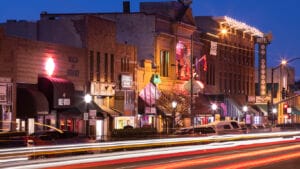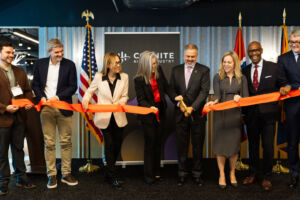In an article published by Money Inc., featuring “The 20 Greatest Business Comebacks Stories of All Time,” Apple, Marvel and General Motors were among notable companies on the list. Together, these businesses (and others) faced extreme financial hardship — some even falling into bankruptcy. Yet, despite their adversity, they made their way back, ending up stronger and more prosperous than before. As we speak, one of Arizona’s most valuable industries is making a comeback. With the collaborative and unifying efforts of PHX East Valley tourism groups and efforts like the Visit Arizona Initiative, Arizona’s tourism industry may also end up better, bigger and broader than it was before.
READ ALSO: 15 must-see places for an Arizona road trip
Everyone loves a good comeback story
They don’t refer to Metro Phoenix as the “Valley of the Sun (and fun)” for no reason. For a long time, Arizona has remained a top tourism destination because of all the sun and fun to be had. And there are numbers to prove it. Preceding the pandemic, in 2019, Arizona’s tourism sector experienced a record year. Overnight visitation totaled 46.8 million (up 2.8 % from 2018) and tax revenue earnings tapped out at $3.78 billion (up 4.2% from the prior year). And then … COVID-19 reared its ugly head.
By 2020, visitation to the state plummeted 31% and visitor spending decreased by 41%.
For an industry that up until the pandemic had largely flourished, the economic blow was painful and widespread.
“We had a tough row during 9/11 and some hemorrhaging in the economy again during the Great Recession, but nothing like this,” says Marc J. Garcia, president and CEO of Visit Mesa, “where an entire industry was forced to shut down.”
As destabilizing as the pandemic was to Arizona tourism, Garcia and his East Valley colleagues didn’t let the bleak pandemic outlook staunch their creative thinking and approach.
“What I’m really proud about with our organization, in particular, is how quickly we responded to the needs of our partners,” Garcia says.
One notable campaign in Mesa was the “We’ve Turned Main Street Into a Mile Long Drive-Thru.”
“Every lunch hour and evening it was like a traffic jam down Main Street with people supporting local businesses,” Garcia says.
Mesa’s tourism neighbors in Tempe adopted a similar strategy, getting boots on the ground.
The City of Tempe Economic Development Office initiated a weekly strategy call that included the Tempe Chamber of Commerce, Downtown Tempe Authority and the Tempe Tourism Office.
“This group — called ‘TEAM Tempe’ — met weekly to find ways to support local businesses, develop programs to create business opportunities, encourage local residents to spend locally and created a virtual job fair to help businesses find employees,” says Michael Martin, interim president and CEO for Tempe Tourism.
In addition to combining creative strategies and working collaboratively, many East Valley communities turned to Arizona’s natural resources to promote tourism during the pandemic — and continue to do so.
“Fountain Hills leveraged outdoor community assets and attractions such as recreational parks, hiking trails, and golf courses to continue attracting visitors in a safe manner,” says Eric Prochnow, economic development and tourism specialist for the Town of Fountain Hills.
Coming back, starting closer to home
Amidst their proactive road to tourism recovery, Garcia and Martin — and many of their local tourism counterparts — realized their marketing strategy would have to take a necessary and urgent detour.
“Instead of marketing outside of Arizona, focusing on ‘heads in beds,’ this pandemic showed us we needed to get closer to our local partners, business and residents,” Garcia explains.
“We had to pivot our marketing efforts from our traditional target markets to local and regional drive markets,” Martin says. “While we have included these markets before, they became the primary focus.”
Despite variants of COVID making for an uncertain future, East Valley meeting and event planners and industry leaders remain hopeful. And they have a reason to be optimistic. According to research conducted by Destination Analysts in mid-January, an estimated 80% of American travelers have trips currently planned in 2022, with upwards of 70% planning to travel.
“Over time, the recovery has exceeded expectations. We are already experiencing strong indications that recovery is taking place,” Martin says. “In Tempe, that means an increase in the total number of rooms sold compared with the peak year of 2019. We are also seeing a strong recovery of our average daily rate.”
Visit Arizona Initiative: AKA the comeback kid
The collaborative efforts of Arizona’s tourism organizations continue to aid in the industry’s recuperation. And their efforts toward restoration have been further bolstered by the Visit Arizona Initiative. In October 2021, Gov. Doug Ducey and the Arizona Office tourism announced that 43 businesses and organizations statewide would receive upwards of $9.4 million in Visit Arizona Initiative Partnership grant funding. The relief funds are intended to relaunch or expand festivals, arts, culture, and community events across the state. Recipients of the initiative funding range from Visit Mesa and the Town of Fountain Hills to the Arizona Jewish Historical Society, Ballet Arizona and other tourism-related entities.
“The Visit Arizona Initiative will prove to be a Godsend and go a long way to help our industry recover,” Garcia says.
“Funding from the Visit Arizona Initiative Partnership has been vital in reigniting Arizona’s tourism efforts throughout the state,” Prochnow adds. “These types of programs directly help Arizona’s tourism sector by bringing back events, attractions, and activities that people have missed throughout the pandemic.”
Examples of events and attractions aided by the Visit Arizona Initiative include the partnership of the Desert Botanical Garden and Frank Lloyd Wright Foundation’s Taliesin West, enabling the Chihuly in the Desert exhibit to be featured at both locations.
For tourism advocates, like Visit Chandler, the initiative helps “amplify tourism marketing efforts,” according to Kimberly Janes, tourism program manager for Visit Chandler. “This type of targeted investment has not only helped to revitalize the industry,” she says, “but it has also highlighted how important tourism is to growing Arizona’s economy.”
She’ll be coming ‘round the mountain (literally)
As the Visit Arizona Initiative funds go to work, and tourism organizations continue to apply creative and robust recovery measures, the tourism sector is coming around the corner. And, in addition to Arizona’s sun, fun and Sonoran mountain desert-scape, there is still plenty of Valley beyond the mountains, open for development.
Parts of the East Valley are booming in new development, with tourism opportunities abounding. Newer arrivals in Mesa include Bell Bank Park, the 320-acre sports and entertainment mecca; as well as Cannon Beach, the state’s first surf park. But, it’s not just new development that’s enticing people to travel to destinations in the East Valley. It’s also forward-thinking programs such as Mesa’s designation as the first-ever autism-certified city in the United States, as well as Visit Mesa’s Hidden Disabilities Sunflower Program, that provides and invites a more inclusive tourism perspective and experience.
And, where new development can’t occur on a larger logistic scale, as is the case for Tempe, they are turning to a different strategy.
“As a landlocked city, Tempe is adapting to becoming a more vertical community,” Martin says.
“This means smart redevelopment and thoughtful ways of thinking of land use. Currently, the Omni Tempe at ASU and the VIB Tempe hotels are under construction. ASU’s Novus corridor will be adding a new arena for ASU Hockey. And the innovative, car-free development called Culdesac Tempe is now under construction and will bring new amenities to Apache Boulevard.”
Arizona’s tourism comeback may take a while, but rest assured, if the East Valley has anything to say about it — they’re proactive and prepared to take whatever steps are necessary to continue to build on the industry’s momentum.
“Overall, I think the outlook is quite positive,” Janes says. “From everything I have been reading and monitoring, I anticipate that we will continue to see strong travel demand as people look to connect with family, friends and loved ones with short getaways to escape the day today.”




